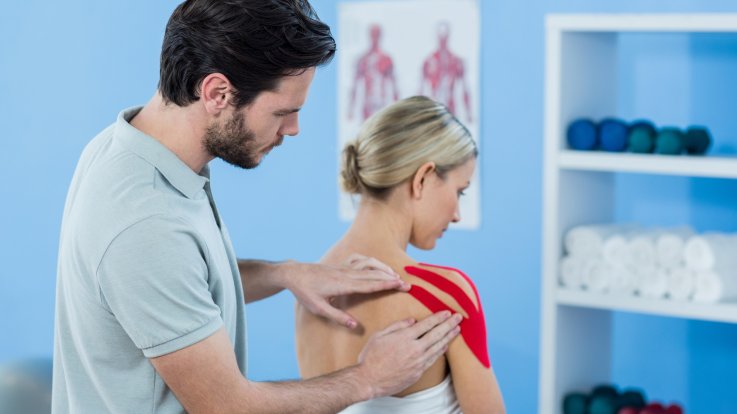Kinesiotaping - indications for its use

Among the methods of rehabilitation in recent years, kinesiotaping, also called dynamic plastering, is quite popular. Over the years, it has become clear that it is not only physiotherapy that can be used in this therapy. Find out who else can benefit from kinesiotaping.
Kinesiotaping consists in wrapping the diseased, injured parts of the body with special tapes, the structure and production of which was patented in the 1970s by the Japanese physiotherapist and chiropractor Dr. Kenzo Kase. It is therefore not a new method, so it is not surprising that it has managed to win both supporters and opponents. Over the years, it has become clear that it is not only physiotherapy that can be used in this therapy.
Classic display - sports injuries
The CRT concept was originally developed to assist athletes in the rehabilitation of injuries. It turns out that by using the right technique and choosing the right place to apply KinesioTex patches, it is possible to achieve analgesic and anti-edema effects, thanks to which the range of movements in the injured joint is increased. Moreover, after taping the affected part of the body, the relaxation of muscles appears, which is essential when undertaking physical rehabilitation after injuries.
The mechanism of action of CRT patches is based on their special construction. Well, the plasters used in this method are flexible, but only in their long axis. Thanks to this property, they can be applied in the right direction, after slight stretching, thus achieving a continuous gentle pull of the skin beneath them and reducing the increased pressure in the subcutaneous tissue, usually caused by inflammation. In this way, pain receptors are decompressed, lymph outflow is improved and muscles are finally relaxed. With such a mechanism of action, the scope of possible application of CRT is very wide.
Movement rehabilitation
A number of neurological or rheumatic diseases require, in order to achieve good therapeutic results, proper kinesitherapy, i.e. rehabilitation through physical exercise. Often, however, the possibilities for such therapy are limited by increased muscle tension, swelling or joint contractures, and it may be a good idea to apply CRT patches to the affected areas beforehand. Similarly, in rehabilitation after surgeries, especially orthopaedic and neurosurgical surgeries, where, in addition to the problems mentioned above, pain is the limiting factor of rehabilitation - the use of dynamic plastering may bring relief to the patient and allow for more effective rehabilitation.
Kinesiotaping after surgery
An interesting and relatively new proposal for the application of CRT is to help patients after surgery. Reducing muscle and skin tension in the wound area, as well as relieving stress on nociceptors (pain receptors) can be helpful in relieving pain after surgery. Of course, the application of KinesioTex patches alone cannot withstand pain alone, but it can make it easier to control the severity of pain using pharmacological methods. The second positive effect of dynamic plastering, by reducing tension in the wound, is a better healing and ultimately a better appearance of the postoperative scar.
Lymphoedema
People who have never experienced lymphedema will certainly not realize how difficult it can be. In such conditions, which often occur after mastectomy, for example, the volume of the limb may increase several times due to lymphatic failure. CRT can improve the drainage of lymph from swollen limbs and provide relief.
Chronic and acute pain syndromes
Dynamic patching can be very helpful in the case of pain syndromes, whether chronic or acute, such as traumatic ones. CRT is particularly often used for shoulder, neck and back pain.
Prevention of injuries
Kinesiotaping can bring benefits not only after injuries, but also in preventing them from occurring. Appropriate wrapping of the joint area helps to stabilize the joints. Such wrapping is often used for knee and shoulder joints, but of course it is also possible to peel off other areas, depending on which joints are most at risk of injury in the sport.



Komentarze (0)
Zostaw komentarz ⇾